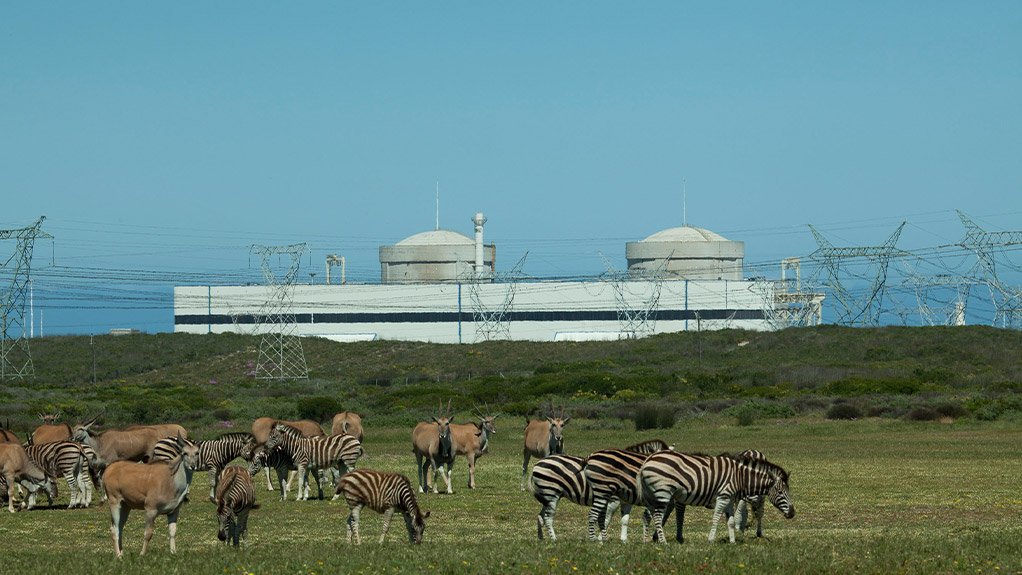 South Africa’s National Nuclear Regulator (NNR) has confirmed that power utility Eskom had submitted the safety case in support of its application to extend the operational life of the Koeberg NPP beyond the current 40-year licence term. The two 970MWe pressurised water reactors at Koeberg NPP were built by Framatome, and began commercial operation in 1984 and 1985. They generate about 5% of the South Africa’s electricity.
South Africa’s National Nuclear Regulator (NNR) has confirmed that power utility Eskom had submitted the safety case in support of its application to extend the operational life of the Koeberg NPP beyond the current 40-year licence term. The two 970MWe pressurised water reactors at Koeberg NPP were built by Framatome, and began commercial operation in 1984 and 1985. They generate about 5% of the South Africa’s electricity.
That application was submitted by Eskom in May 2021 and accepted by NNR for further processing in August 2021. NNR’s Orion Phillips, Divisional Executive Nuclear Power Plant, confirmed that the safety case was submitted on 21 July 2022. NNR said this is within the prescribed timelines and provides adequate time for the regulator to assess the safety case and for the Operator to respond to requests for more information as and when needed.
Eskom is in the process of finalising the Public Information Document (PID) and will have to publish both the application and the PID in the government gazette, newspapers and to serve notices to interested and affected parties. “We are beginning a process of robust scrutiny of the safety case on which we will report our progress and findings, including public comments received in a Safety Evaluation Report to the NNR Board of Directors,” said Peter Bester, Programme Manager Nuclear Power Plant.
However, some civil society organisations and experts believed the worrying culture of secrecy around Koeberg was unacceptable and that the entire safety case should be made public – not just the PID. Cape Argus reported.
Energy analyst professor Hartmut Winkler, a physicist at the University of Johannesburg, said civil society and the public were correct in demanding greater transparency and full information regarding the nuclear plant.
On 28 July Cape Argus’s Kristin Engel submitted a number of questions to NNR for clarification. He asked: “What are some of the key insights of the safety case for the application to extend the operating life of the Koeberg?” NNR said the regulator takes several factors into consideration when assessing the safety case for this application. “Some of the key insights include but are not limited to;
• A safety justification • Compliance with the Regulator’s principal safety criteria • The application of Defence-in-Depth of the NPP • The Radiological Risks connected with the application • Ageing management improvements and risks • Reviewing the adequacy of the design for extended operation and the confirmation and verification of the design basis • A detailed assessment of safety-related programmes such as Emergency planning and environmental impacts • A Periodic Safety Assessment covering relevant Safety Factors • Plant improvements needed for extended operations.”
Engel said some civil society organisations had called for the safety case to be made public- not just PID as they say public participation cannot be meaningful if information relevant to the issue is hidden. He asked whether NNR would consider sharing the safety case. NNR said: “The safety case submitted with this application belongs to a third party which is Eskom. Civil Society organisations can submit a request to Eskom for a copy of the safety case.”
Engel also asked whether the extension of Koeberg was essential to resolve South Africa’s electricity crisis. NNR said its mandate “is confined to ensuring that the regulatory framework for nuclear safety is established, enforced, and maintained for the protection of persons and the environment”, adding that Eskom is better placed to answer this question.
In March, the Long Term Operation (LTO) plan for Koeberg was reviewed by an International Atomic Energy Agency's (IAEA's) Safety Aspects of Long Term Operation (SALTO) team at the request of South Africa's Department of Mineral Resources and Energy.
Team leader Gabor Petofi, senior nuclear safety officer at the IAEA, said staff were "professional, open and receptive to suggestions for improvement – despite challenges, the plant has eliminated several deviations from IAEA Safety Standards in ageing management activities and preparation for safe LTO identified during the Pre-SALTO mission in 2019."
The team identified good practices that could be shared with the industry globally, such as integrating a corrective action programme to extensively consider operating experience for LTO and using a template to collect information from the original equipment manufacturers to establish the extended qualified life of electrical components.
The team also provided recommendations and suggestions to further enhance the preparations for safe LTO, including that Eskom should comprehensively review and implement all plant programmes relevant for LTO; complete the revalidation of qualification of cables in the containment for the long term operation period; and ensure full functionality of the containment structure monitoring system.
Koeberg plant management said it was committed to implement the recommendations and requested that the IAEA schedule a SALTO follow-up mission to Koeberg in 2024. The team provided a draft report to the plant management and NNR for comments and said a final report would be submitted to plant management, NNR and the Government of South Africa within three months.
Image: The Koebery nuclear power plant in South Africa






